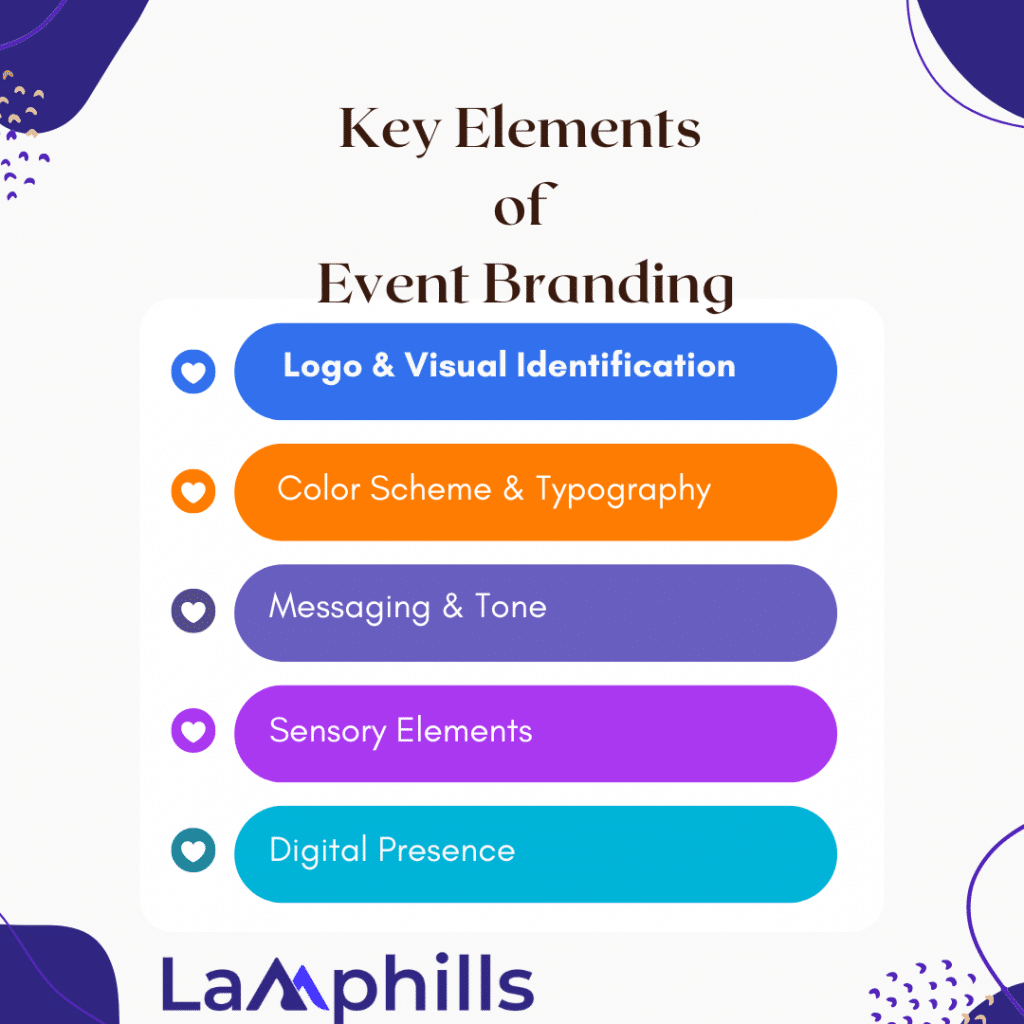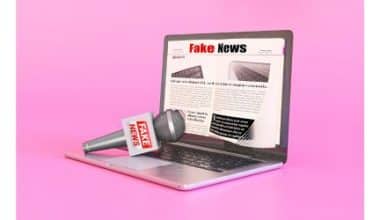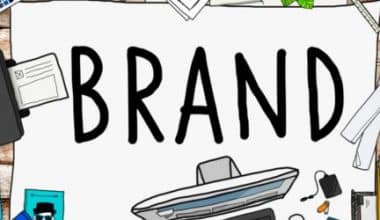What differentiates a good event from the best event of the summer? Some people will say food, while others will say entertainment. When you think about it, it’s all about offering an outstanding experience for everyone involved while also distinguishing out from the crowd. I vividly recall my first attempts to create a consistent brand experience for an event. It was a steep learning curve, full of tries and errors, but it finally showed me the enormous power of successful event branding. Event branding is more than simply a logo or a theme; it is about creating a memorable experience that connects with your target audience and leaves a lasting impression. Here, I’ll provide some great event branding examples and ideas to help you take your next large event to new heights.
What is Event Branding?
Event branding is the act of giving an event a distinct identity and a unified experience by incorporating images, messaging, and sensory aspects. It includes everything from the event’s logo, color scheme, and typography to the whole mood, such as decor, lighting, and music selection. The goal is to produce a consistent and engaging experience that reflects the event’s purpose and connects with the audience.
Difference Between Event Branding and Event Marketing
Both event branding and event marketing are critical for firms to differentiate themselves in the market. However, they serve various objectives.
Event branding focuses on adding brand aspects such as the brand name, logo, and visual elements that reflect the target demographic and goals.
Event marketing, on the other hand, is the process of promoting an event to its intended audience via various channels such as social media, e-mail marketing, and advertising. The event marketing methods aim to create a sense of excitement and anticipation among attendees about what will happen at the event.
Key Takeaways
- The consistent use of colors, logos, and themes contributes to the creation of an identifiable and memorable event brand.
- Involving your community in the branding process helps to make the event more unique and connects participants.
- Sharing the story behind your event fosters a greater emotional connection with your audience.
- Effective use of social media can greatly increase the reach and engagement of your event.
- Using participant feedback to modify and improve your event branding assures long-term success and relevance.
Why Is Event Branding Important?
Event branding is important because it helps to establish a strong, recognizable identity for your event, which may lead to increased engagement, recall, and loyalty among attendees. Freeman’s study found that consistent brand presentation across all media increases revenue by up to 23%. Furthermore, event branding can have a big impact on how your event is perceived, setting it apart from competitors and making it more memorable.
Key Elements of Event Branding

To develop a successful event brand, consider the following crucial elements:
- Logo & Visual Identification: Your event’s logo is the foundation of its brand identification. It should be original, memorable, and relevant to the event’s theme and objective.
- Color Scheme & Typography: Consistent usage of colors and typefaces contributes to a cohesive visual experience. Choose colors that convey the desired feelings and are consistent with your brand’s personality.
- Messaging & Tone: Your event’s messaging should be clear, captivating, and consistent throughout all mediums. Determine the tone of speech that best represents your event and utilize it across all communications.
- Sensory Elements: Decor, lighting, music, and even scents can all help to engage your audience’s senses. These factors can improve the overall mood and provide a more immersive experience.
- Digital Presence: To provide your audience with a consistent experience, your event’s website, social media, and other digital platforms should all have the same branding.
Event Branding Tips for Virtual Events
Virtual and hybrid events are rapidly gaining prominence. However, as with any event, gaining registrants is only half the battle. Modern event marketers use a variety of digital marketing methods to build brand awareness and promote their events. Let’s look at some digital marketing tactics you may use and how to improve your whole virtual event experience.
#1. Create an event landing page
The landing page for an event has two functions: it provides extensive event information as well as a fast registration experience. The presentation of the information is equally important as the substance itself. Ensure that the landing page layout is user-friendly and intuitive so that visitors can easily access crucial information. The informational content should be presented logically, culminating in a call to action (e.g., registration).
The more clicks a user must make to register, the less likely they are to finish the procedure. As a result, it’s critical to maintain the registration process as simple and frictionless as feasible. By lowering registration barriers, event organizers enhance the likelihood of turning visitors into attendees.
Read Also: The 13 Landing Page Optimization Tools Experts Don’t Want You Using (Because They’re Too Effective)
#2. Promote via social media
The social media channel you use to promote your event should be aligned with where your target demographic consumes material the most. For example, if your target audience is in the B2B space, LinkedIn may be the best platform. If your demographic is less defined, you might use Meta’s well-developed advertising algorithm to reach potential attendees.
Regardless of which platform(s) you use, personalize your content to both the audience and the platform’s specific qualities. Content that works well on one platform may not work as well on another. Create content that is optimized for each platform and tailored to the audience’s tastes and expectations.
Google Ads, Pinterest Ads, and influencer marketing are some of the other popular forms of digital marketing for promotional objectives. Finally, where you select to promote is primarily determined by your target demographic, budget, and timescale.
#3. Align your in-event branding with your overall brand strategy
Following a successful digital marketing campaign, people will approach an event expecting, consciously or unconsciously, the branding to be consistent with past touchpoints. With access to cutting-edge event management technology, it’s never been easier to align and improve your event branding.
To be more specific, this could include changing the color scheme of your event’s desktop interface or delivering a personalized app experience for attendees who access the event via mobile. With innovative technology enabling broad customization possibilities, you have the freedom to make the necessary changes to complement your desired brand experience.
Read Also: BRAND RESONANCE: Elevating Brand Resonance Through Experiential Engagement
#4. Ensure consistency
Event branding begins well before the event and continues well after. Consider and improve the multiple pre- and post-event touchpoints where your target audience may come into contact with your brand—from a visually appealing, highly targeted PPC campaign to a thoughtfully crafted ‘thank you for attending’ follow-up email.
The goal of event branding is to maintain consistency across all platforms. Marketers may boost the likelihood of producing a memorable and compelling event experience that resonates with the audience by paying attention to the minute (and perhaps sometimes neglected) details of event branding and ensuring they align with the overall brand identity.
Event Branding Tips For In-person Events
These branding tips for in-person events can help you exceed guest expectations.
#1. Offer a branded registration experience
The event registration page is frequently the initial point of interaction between registrants and the event brand. Therefore, ensuring that it accurately matches your brand’s identity, message, and visual aspects is critical. A fully personalized and branded event registration page can help you accomplish this.
By including your company’s colors, fonts, and graphics in the registration page design, you can establish a consistent brand experience from the first click. Furthermore, customized registration forms can capture data that can be used for marketing and to personalize the attendance experience.
#2. Do not neglect the event check-in experience
Once people arrive at your event, maintaining a consistent brand experience is critical. One approach is to use completely branded and customizable event check-in and credential printing software. This software enables you to combine your brand’s visual features into the check-in process and print branded name badges, resulting in a professional and uniform appearance.
Customizable software also enables you to design unique check-in experiences that are consistent with your brand messaging, such as personalized greetings, welcome messages, or even interactive components. This can establish the tone for the event and leave a good impression on attendance.
#3. Display intriguing signage
Signage is a tried-and-true method of event branding that continues to be effective. Signage increases your brand’s visibility and communicates vital messages to your target audience, guiding people through events and serving as a tool for brand recognition. As with other marketing assets, make sure your signage appropriately represents your brand and is visually and tonally compatible with the broader event marketing strategy.
#4. Ensure consistency with a mobile event app
In today’s digital world, mobile event apps have become a must-have for in-person events, offering participants a personalized and interactive experience. To ensure event branding consistency, personalize your app to fit your brand’s identity.
A mobile event software that lets you customize logos, colors, symbols, and messaging may provide guests a consistent brand experience. This allows guests to access timetables, event maps, and other event-related information in a branded environment that feels like an extension of your event. This, in turn, can boost brand recognition and foster engagement with your brand long after the event has ended.
#5. Optimize for user-provided content
Photo booths and flower walls attract visitors, creating an ideal environment for user-generated material. You can take advantage of this by urging people (via signs) to utilize a unique event hashtag when posting, resulting in enhanced organic event visibility.
#6. Use swag to create a memorable experience
The rationale for event swag is divided into two camps: the idea of consumer delight and reciprocity. Exceeding expectations is critical for an event’s success, and supplying attendees with branded swag, such as shirts and bags, can help.
The opposite side of the swag coin is the concept of reciprocity. When someone receives something for free, they are more likely to reciprocate. In the context of events, this can lead to participants tagging your brand on social media, giving positive feedback, attending subsequent events, and becoming brand champions.
Event Branding Ideas
Here are some basic yet efficient ways to promote your event brand, conference branding, or gala.
#1. Design Branded Props
Branding does not have to be complicated or expensive to execute. A simple cardboard frame for social media, branded t-shirts, or branded freebies will help generate the buzz you need to promote your event. Link the prop to the event’s target market and intent, and it should be effective.
#2. Banners and Backdrops
If you have a single entrance with photo opportunities, include the stakeholder brand together with the event brand on the backdrop. Use banners surrounding the event if suitable, either at eye level or at height.
#3. Branded Food
Don’t underestimate event catering’s ability to make or destroy an experience. Use this to your advantage by branding napkins, menus, food labels, food flags, or any other suitable manner. If you feed your guests properly while also displaying the brand, you develop a good relationship between the two.
#4. Brand Experiences
Create a consistent brand experience across all media channels used by your target market. Create 360-degree films of the event, use branded goodie bags, and don’t be hesitant to try experiential marketing if it works for your target group.
Inspiring Event Branding Examples To Emulate
Here’s how businesses leave an impact on an event that piques people’s interest and excitement long after it ends.
#1. The Web Summit
The Web Summit is a technology conference that brings together individuals and firms from the global technology industry. TWS event branding contains aspects such as passion, energy, and enthusiasm, which are visually displayed appealingly to encourage registration. Their website contains useful information as well as calls to action for registration and partnership.
#2. Lollapalooza
Lollapalooza is a four-day event at which musicians play. The event website combines brand aspects such as the logo, typeface, and theme. They also display photos from previous events and call-to-actions for event registration and ticket purchases.
#3. Consumer Electronics Show (CES)
The CES event branding emphasizes the promise of technology, built on the pillars of progressiveness, passion, and innovation. The event’s brand concept promotes technology that helps the globe, as well as a vow to be all-inclusive for industry businesses. The event’s brand experience can be described as large, insightful, and optimistic.
#4. Ted Talks
The colors you chose for your event may appeal to your audience and influence their engagement. For example, TED Events incorporate a red and black theme. The color red conveys passion and enthusiasm, as part of TED’s thoughtful event branding approach.
Furthermore, their event webpage provides succinct, clear, and relevant information to attendees, with a call to action “Attend the Event” to encourage registration.
TED conferences are world-renowned for their compelling lectures and innovative concepts. Simplicity and consistency can effectively communicate professionalism and credibility.
#5. New York Fashion Week
New York Fashion Week (NYFW) is an excellent example of event branding that extends beyond the catwalk to engage the audience. The NYFW event website represents inspiration, escapism, and design tales that visually transmit their purpose and message to its intended audience and guests.
#6. SMFest
SMFest is an annual conference that brings together some of the world’s greatest minds. It is an event that delivers ideas, exposure, and insights to help individuals and businesses learn how to achieve greater success through digitization. Their objective is to create a community of creatives who use social media to improve impact and visibility. SMFest’s goal is to create opportunities to Connect, Innovate, and Grow through a variety of events. SMFest is owned and produced by Silicon Africa Technologies.

#7. Maker Faire
Maker Faire is an excellent example of how event branding can help your business generate interest, collaboration, and enthusiasm. The branding and imagery draw tech enthusiasts to the event. It has established itself as a premier DIY event where people come together to craft.
#8. Burning Man
Burning Man encourages artistic expression and community building, hence the event’s branding is strange. Event branding on the website conveys a clear message, serves as a countdown to the event, and generates excitement among prospective guests.
Burning Man is an annual event that promotes community, art, self-expression, and self-reliance.
Burning Man’s branding is organic and community-driven, emphasizing creativity and individuality. The event encourages attendees to contribute to the branding with their artwork and initiatives.
They encourage community involvement and creativity to create a distinctive and memorable brand experience.
#9. TNW (The Next Web) Conference
The design and theme of the Next Web Conference website communicate a story of inspiration, imagination, and intuition while graphically representing their objective. TNW’s event branding features convey a feeling of creativity, intelligence, and dependability to prospective attendees.
#10. The Game Developers’ Conference
The Game Developers Conference (GDC) is one of the most anticipated events in the industry. The GDC event website and materials are developed with the colors, logo, typefaces, and theme in mind. The call to action is also apparent, ensuring that the event branding is on track.
Furthermore, the GDC event website features an ad in the header, social media icons on the right, and conspicuous click-through links for registration and exhibit.
#11. Adobe MAX
Events provide an excellent opportunity for organizations to display who they are, what they do, and why they do it. Adobe MAX event is an excellent example of a company that aligns all of the aspects to establish an event brand identity.
The Adobe MAX event webpage has a powerful memorable background image, catchy headline, color scheme, and distinctive headlines, as well as crisp typography, an opening video, and sleek graphics that make it simple and eye-catching.
How to Stay Consistent in Your Event Branding
Consistency is essential for successful event branding to establish a strong and recognizable brand identity. For brand consistency, ensure that the following brand elements remain constant:
- Name
- Logo
- Color
- Slogan
- Graphics
- Typography
Furthermore, ensure that your event adheres to the branding rules to provide your attendees with a memorable and impactful experience.
How to Determine the Success of Your Event Branding
Measuring the performance of your event will be impossible without a thorough understanding of your Key Performance Indicators (KPIs). You may also quantify success by tracking website traffic and analyzing data using Google Analytics.
The number of registrations and participants at the event can also be indicators of good event branding. You may even conduct social media surveys after the event to collect feedback and use it to improve the next event. Analyzing these KPIs allows you to improve future event branding opportunities and analyze cross-channel branding operations.
Using a Branding Template
Using a branding template might help you speed up the event branding process. A template allows you to organize your branding elements and maintain consistency across all mediums. For example, a branding template can help you create a consistent visual identity, generate messaging, and plan sensory aspects.
Feel free to download the Event Branding Strategy Template to kickstart your event branding process.
Conclusion
Event branding is an effective way to create memorable events and establish deep connections with your audience. You may increase participation at your next event by applying best practices and pulling inspiration from successful examples. Are you ready to elevate your event branding to the next level and inspire your attendees?
Related Articles
- Brand Awareness Ideas: Most Effective Ideas in 2024 (Practical Tips)
- 21 Event Press Release Templates & Examples That Inspires Me
- Media Relations: Everything You Should Know (Updated)
- How to Get Media Coverage for Your Business & Event
- Ultimate Guide To Hiring PR Services In 2024





